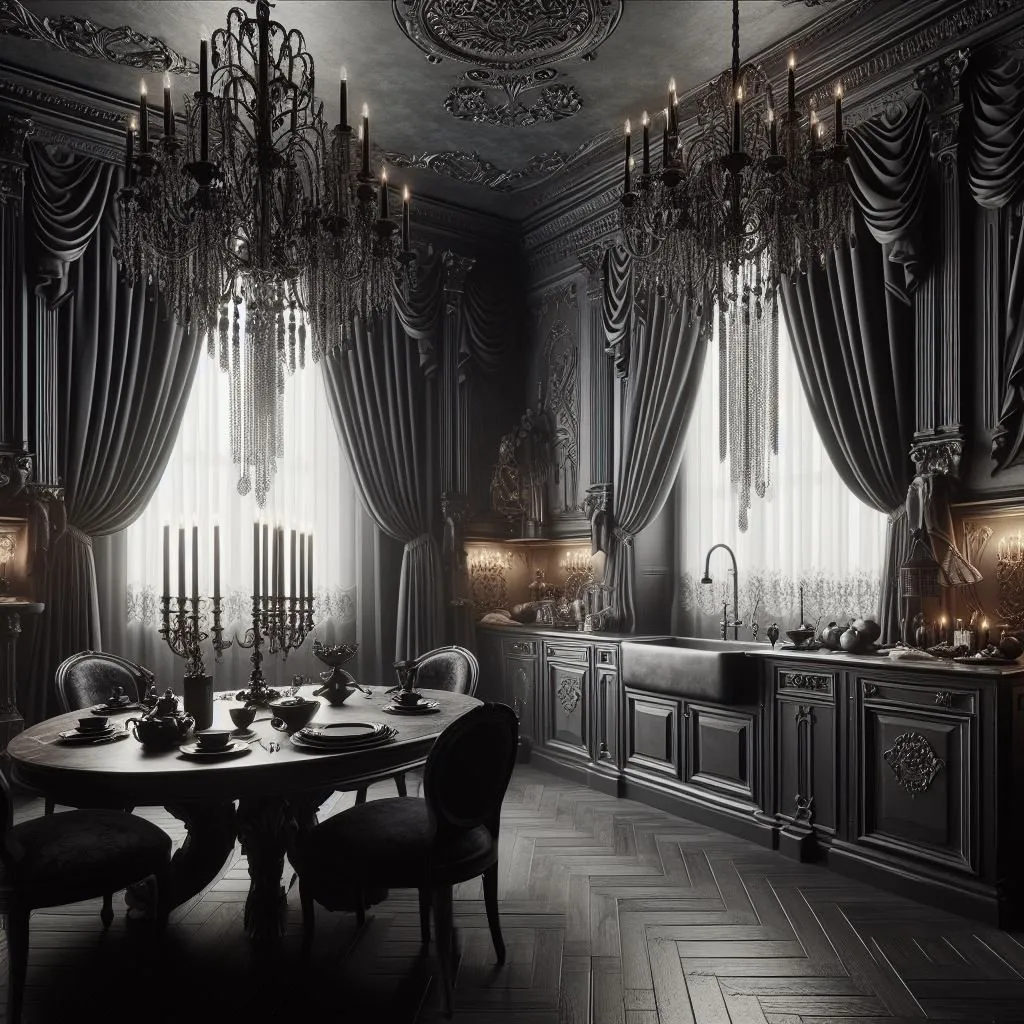What is Gothic Kitchen Decor?
Gothic kitchen decor is more than just a design trend; it’s an immersive experience, a journey into a world of mystery, elegance, and dramatic flair. It takes inspiration from the architecture, art, and aesthetics of the Gothic period, characterized by its dark, imposing, and often ornate elements. Creating a gothic kitchen means embracing a space that is both functional and a statement of your personal style, transforming the heart of your home into a sanctuary of dark beauty. The goal is to craft a culinary space that feels both luxurious and slightly mysterious, where every detail, from the choice of colors and materials to the selection of accessories, contributes to a cohesive and captivating atmosphere. This guide will help you navigate the essentials of gothic kitchen design, providing insights into how to create a truly unique and breathtaking space.
Defining the Gothic Aesthetic
The Gothic aesthetic is defined by several key characteristics that differentiate it from other design styles. It often evokes a sense of drama and mystery, drawing inspiration from medieval architecture and art. Key elements include a preference for dark, rich colors, intricate detailing, and a touch of the macabre. Consider the grandeur of Gothic cathedrals with their soaring arches, stained glass windows, and ornate carvings; the Gothic aesthetic aims to capture a similar feeling of awe and timelessness. This style is not just about surface-level decoration but also about creating a mood and an ambiance. It’s about the interplay of light and shadow, the use of textures and materials, and the incorporation of elements that tell a story. The goal is to create a space that is both visually striking and deeply evocative, a place that engages the senses and sparks the imagination.
Key Elements of Gothic Design
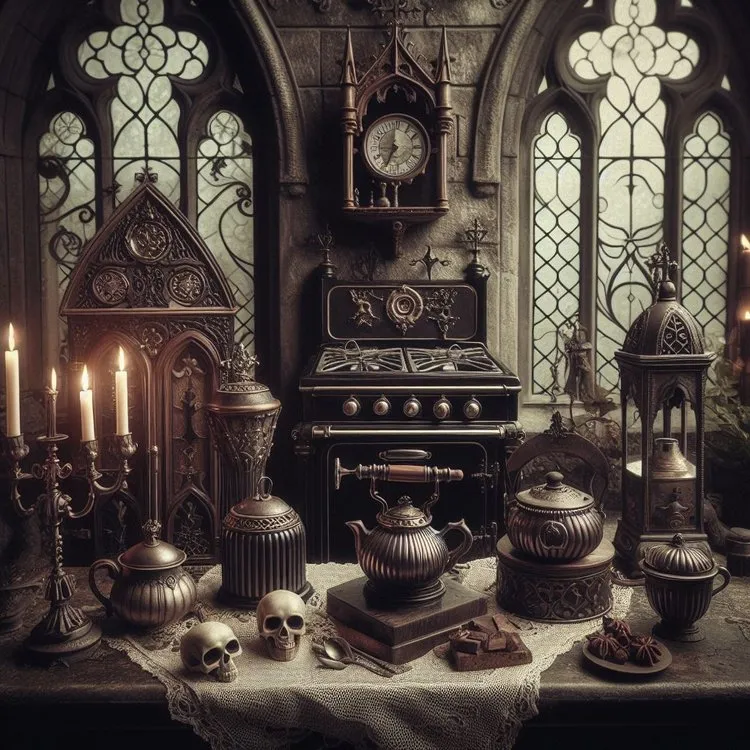
Several key elements distinguish Gothic design, setting the stage for a kitchen that’s both captivating and uniquely styled. Think about pointed arches, vaulted ceilings, and intricate stone carvings. While these architectural features might be challenging to replicate directly, you can incorporate them through design choices. Stained glass, wrought iron details, and heavy, carved wooden furniture all play a significant role. Texture is key in Gothic design; materials like velvet, brocade, and dark woods contribute to the luxurious feel. Think of ornate chandeliers, candelabras, and strategically placed mirrors to enhance the sense of drama. The overall impression should be one of grandeur and sophistication, with every element contributing to the immersive experience of your gothic kitchen. These core elements create the foundation for a space that is both stunning and evocative, embodying the essence of the Gothic style.
Color Palette for Gothic Kitchens
The color palette is fundamental in establishing a gothic atmosphere in your kitchen. The key is to embrace dark, moody tones that create a sense of depth and mystery. Common choices include deep blacks, charcoal grays, and rich, dark greens and blues. These colors provide a sophisticated backdrop, allowing other design elements to stand out. Consider using these darker shades on walls, cabinetry, or even the flooring to establish the core gothic vibe. The interplay of light and shadow is critical, so consider how natural and artificial lighting will interact with your chosen colors. Don’t be afraid to use these dark colors to create a dramatic atmosphere, as they set the stage for the ornate and intricate details that define the Gothic style. The strategic use of color is what will transform your kitchen into a captivating, gothic-inspired sanctuary.
Dark and Moody Colors
Dark and moody colors form the bedrock of gothic kitchen design. Deep blacks, charcoal grays, and even near-blacks in the form of navy or forest green provide a perfect backdrop. These colors create a sense of depth and intimacy, making the space feel enclosed and dramatic. When selecting paint colors, consider matte finishes to absorb light and enhance the moody atmosphere. The darker colors act as a canvas, allowing the textures and details of other elements—like ornate cabinet hardware and striking countertops—to pop. Using these hues on the walls, cabinets, and even the ceiling can transform the entire kitchen into a cohesive gothic sanctuary. Balance these dark tones with strategic lighting and lighter accents to prevent the space from feeling too closed-off, creating a kitchen that is both inviting and dramatically styled.
Using Metallic Accents
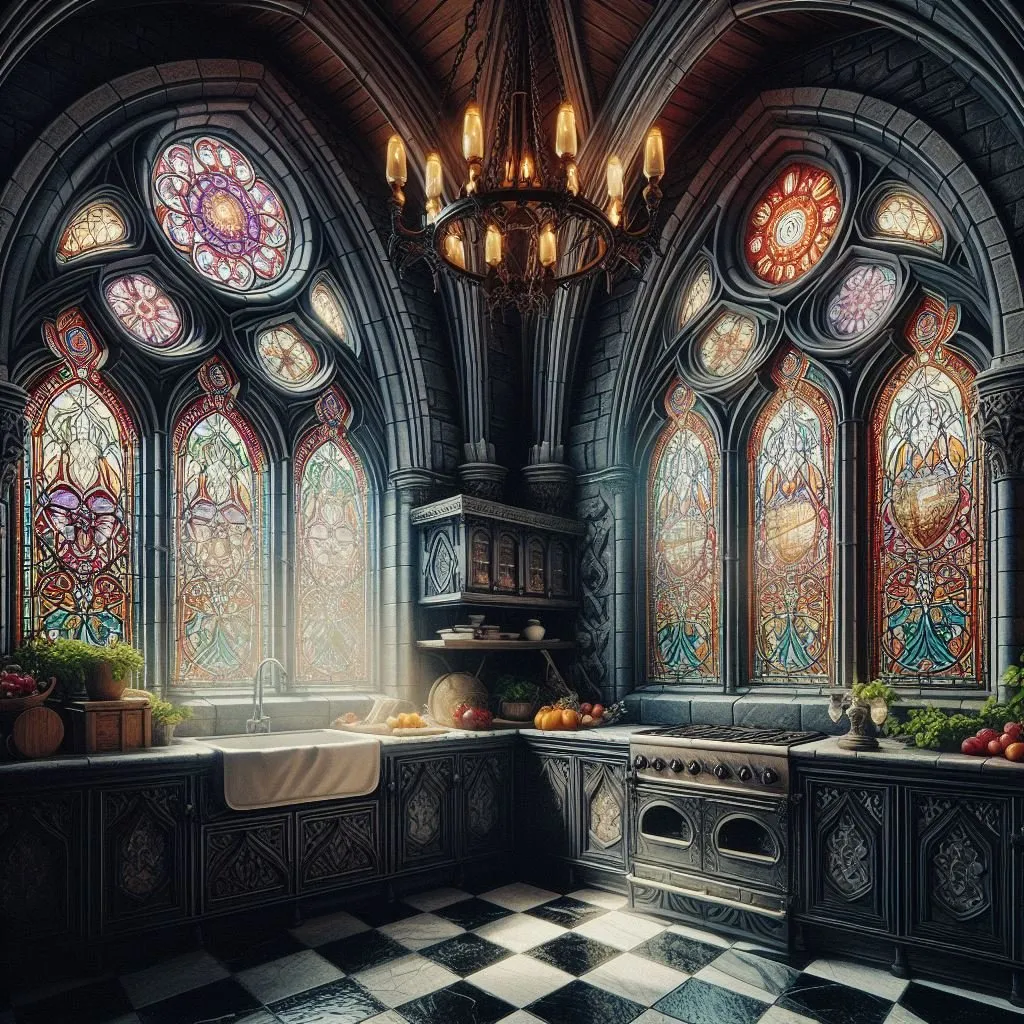
Metallic accents add a touch of luxury and sophistication, providing a striking contrast to the dark color palette. Consider using antique brass, bronze, or even wrought iron for hardware, light fixtures, and decorative elements. These metals reflect light, bringing an element of warmth and brightness to the kitchen. The contrast of the dark tones with the reflective metallic surfaces will create a visually appealing dynamic. A brass faucet, wrought iron pot rack, or bronze cabinet pulls can become focal points in your kitchen. Think about incorporating metallic finishes on larger pieces too, such as a range hood or a kitchen island base. The goal is to balance the darkness with shimmer and shine, creating a space that is both elegant and engaging, and truly captures the spirit of gothic design.
Gothic Kitchen Decor Mats
Gothic kitchen decor mats serve as a subtle yet significant detail in establishing the overall aesthetic. They offer an opportunity to infuse the space with gothic elements while adding comfort and functionality. A well-chosen mat can tie together the color scheme, introduce intricate patterns, and enhance the dramatic flair. Whether placed in front of the sink, stove, or work areas, gothic-style mats subtly reinforce the theme of the kitchen. They can feature gothic motifs, rich colors, and durable materials, all while adding a layer of comfort. They are a small detail that makes a big impact, pulling together the overall design and reinforcing the unique gothic aesthetic of your kitchen. Make sure to choose mats that complement the existing decor, creating a cohesive and visually appealing space.
Choosing the Right Material for Durability
When selecting gothic kitchen decor mats, material choice is essential for both aesthetic appeal and durability. Consider materials that can withstand the demands of a kitchen environment, such as spills and foot traffic. Options like woven vinyl, which mimic the look of more expensive materials, provide great durability and water resistance, along with easy maintenance. Rubber-backed mats can also work well, offering grip to prevent slips and falls, while being easy to clean. Look for materials that are stain-resistant and easy to wipe clean, ensuring that the mats remain looking their best. Durability should be at the forefront, allowing the gothic-inspired design to be a lasting and practical addition to your kitchen, adding both style and functionality to the space. Choose materials that complement the overall aesthetic, such as dark colors and elegant patterns.
Selecting the Best Sizes and Shapes
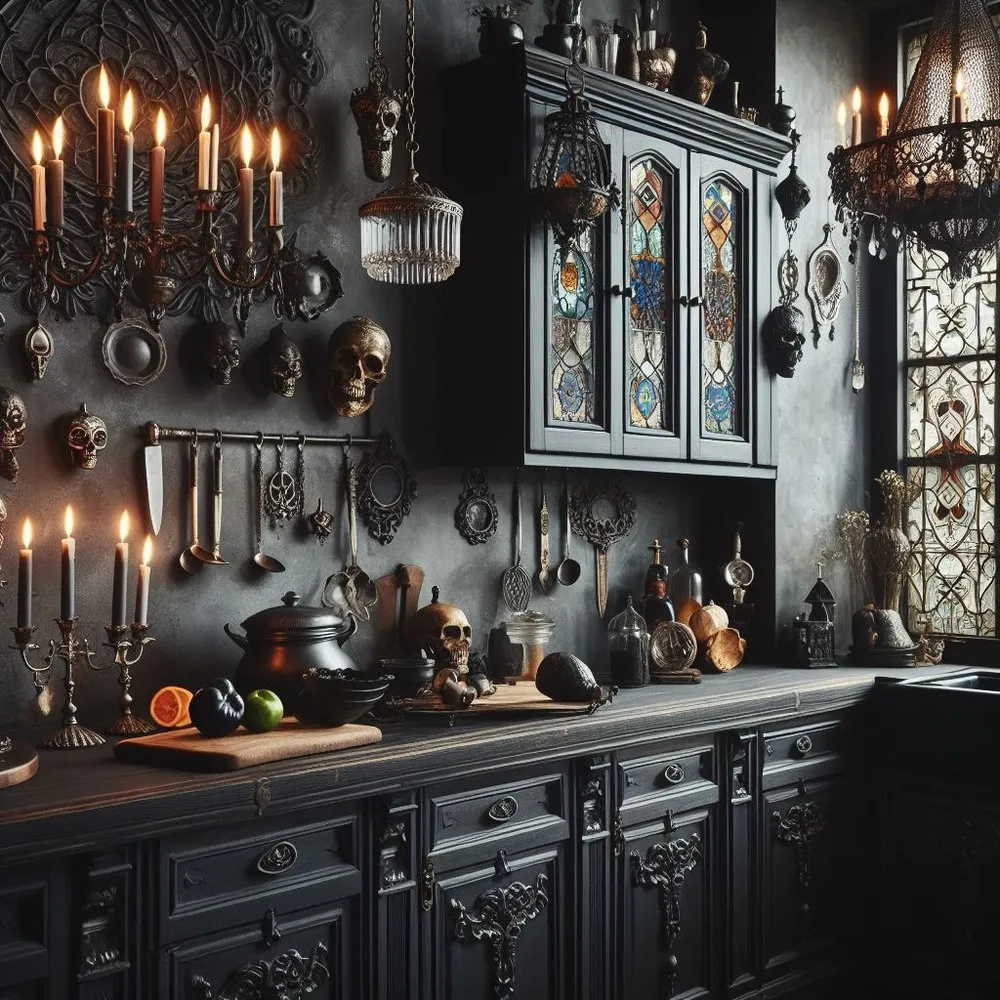
Selecting the appropriate sizes and shapes is key to integrating gothic kitchen decor mats effectively. The size and shape of the mats should complement the layout of your kitchen, enhancing the flow and functionality of the space. Consider the areas where you need the most coverage. For example, a longer rectangular mat could work well in front of the sink or stove, providing cushioning for standing and helping to protect the floor. Smaller, circular or rectangular mats could be used in front of a seating area or the kitchen island. When selecting the shape, consider the overall design of your kitchen and the placement of the mats. Think about how the mats will interact with other elements, ensuring that they don’t obstruct doorways or pathways. Choosing the right sizes and shapes allows you to enhance the gothic aesthetic of your kitchen, while making it a more comfortable and functional space.
Placement and Styling of Gothic Kitchen Decor Mats
The placement and styling of your gothic kitchen decor mats can significantly impact the overall look and feel of your kitchen. Strategic placement is key to harmonizing with the existing design elements and enhancing the gothic aesthetic. Start by considering the high-traffic areas, such as in front of the sink or the stove, where mats can provide both comfort and protection. Layering mats can add depth and visual interest; try placing a smaller mat on top of a larger one to create an appealing effect. Coordinate the mats with the overall color scheme and other gothic elements in the kitchen. For example, if your kitchen features dark wood cabinetry and metallic accents, select mats with similar colors or patterns to create a cohesive theme. The placement and styling of the mats play a crucial role in reinforcing the gothic theme.
Coordinating with Kitchen Design
Coordinating your gothic kitchen decor mats with the existing kitchen design is vital for creating a harmonious space. Start by identifying the main design elements, such as cabinetry, countertops, and wall colors. Look for mats that complement these elements in terms of color, pattern, and texture. If your kitchen features dark cabinets, you might choose mats in a slightly lighter shade to create contrast. If you have ornate countertops, you might choose mats with simpler patterns. Ensure that the mats’ patterns and motifs align with the gothic theme, whether they are geometric designs, or other gothic inspired patterns. Coordinated decor mats help tie the overall design together, creating a cohesive look that highlights the gothic style of your kitchen.
Layering for Visual Interest
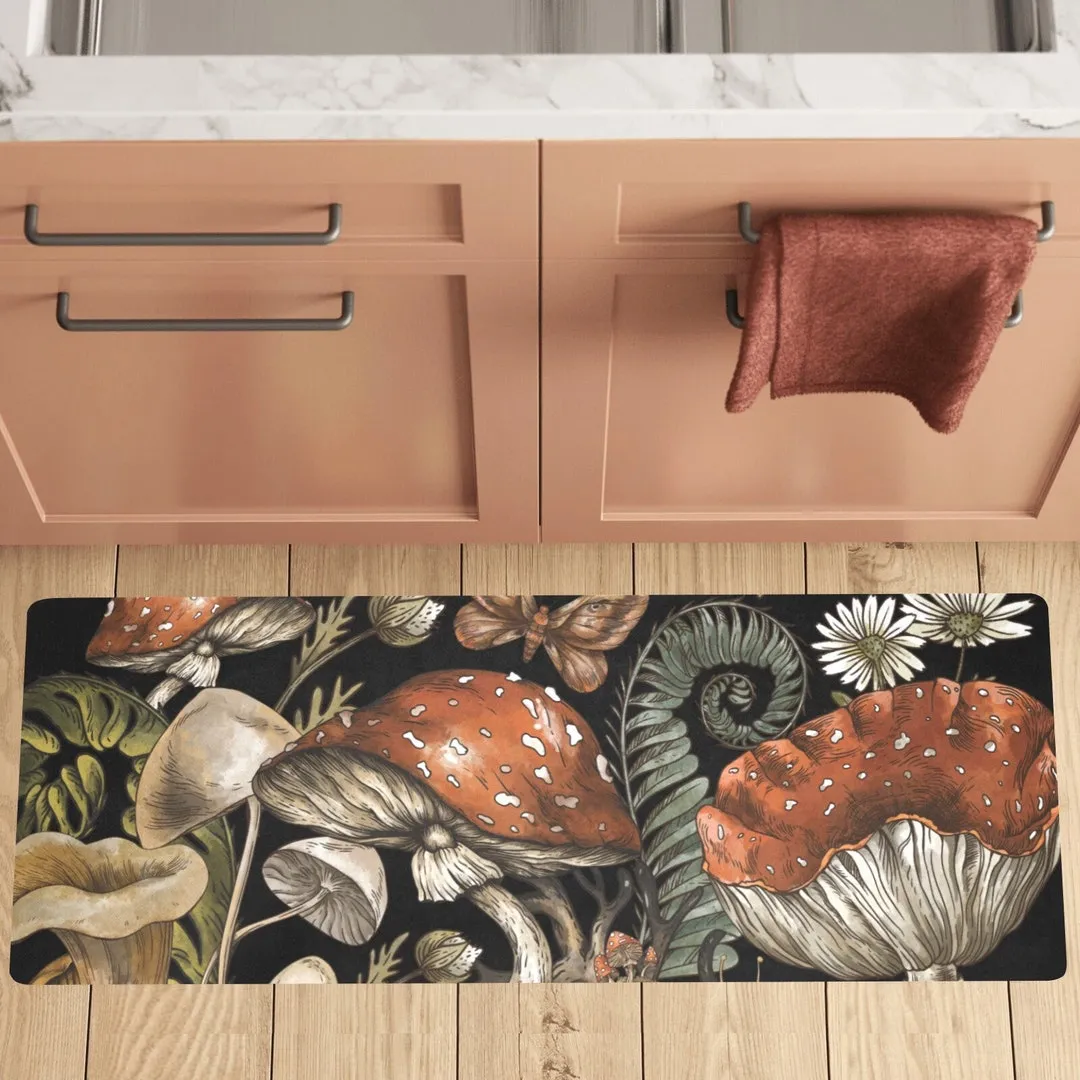
Layering gothic kitchen decor mats is an excellent way to add depth and visual interest to your kitchen. The layering of different shapes, sizes, and patterns helps to create a multi-dimensional look that can elevate your gothic theme. Start with a larger mat as the base layer, and then add smaller mats on top. This creates a sense of dimension and highlights the unique details of each mat. Experiment with different textures and patterns to achieve the desired effect. For example, you can layer a solid-colored mat with a patterned one, or mix different textures to create an interesting contrast. The key is to find a balance that complements the existing decor, while enhancing the gothic aesthetic. Layering can transform your kitchen mats from functional items to design features that add a sophisticated, inviting quality to your kitchen.
Gothic Kitchen Decor Accessories
Accessorizing is key to completing the gothic kitchen look and adding personality to your space. Choose accessories that embody the gothic aesthetic: think antique silver, candelabras, and wrought iron details. A well-placed chandelier can completely transform the atmosphere, casting dramatic shadows that complement the moody color palette. Consider adding decorative elements such as gothic-inspired artwork or mirrors with ornate frames. These accessories can also provide functionality; for instance, a gothic-style spice rack, or a decorative, wrought-iron towel holder. Selecting the right accessories is crucial to pull together the gothic theme. By incorporating these items, you will enhance the overall aesthetic of your kitchen and reinforce the dramatic and mysterious feel of the Gothic style.
Lighting Fixtures
Lighting is critical for setting the mood in a gothic kitchen, enhancing the dramatic and mysterious atmosphere. Choose lighting fixtures that reflect the gothic aesthetic. Chandeliers with wrought iron or dark metal frames, often adorned with candles or candle-like bulbs, are ideal. Sconces with intricate designs and ambient lighting can create a subtle glow, adding depth to the shadows. Consider the placement of your lighting fixtures to highlight key features such as cabinetry, artwork, or countertops. Layering different types of lighting – ambient, task, and accent – allows you to control the ambiance and create various moods in your kitchen. Ensure that your lighting is functional as well as decorative. Proper lighting makes your kitchen not only beautiful but also safe and functional, highlighting all the unique elements of your gothic style.
Cabinetry and Hardware
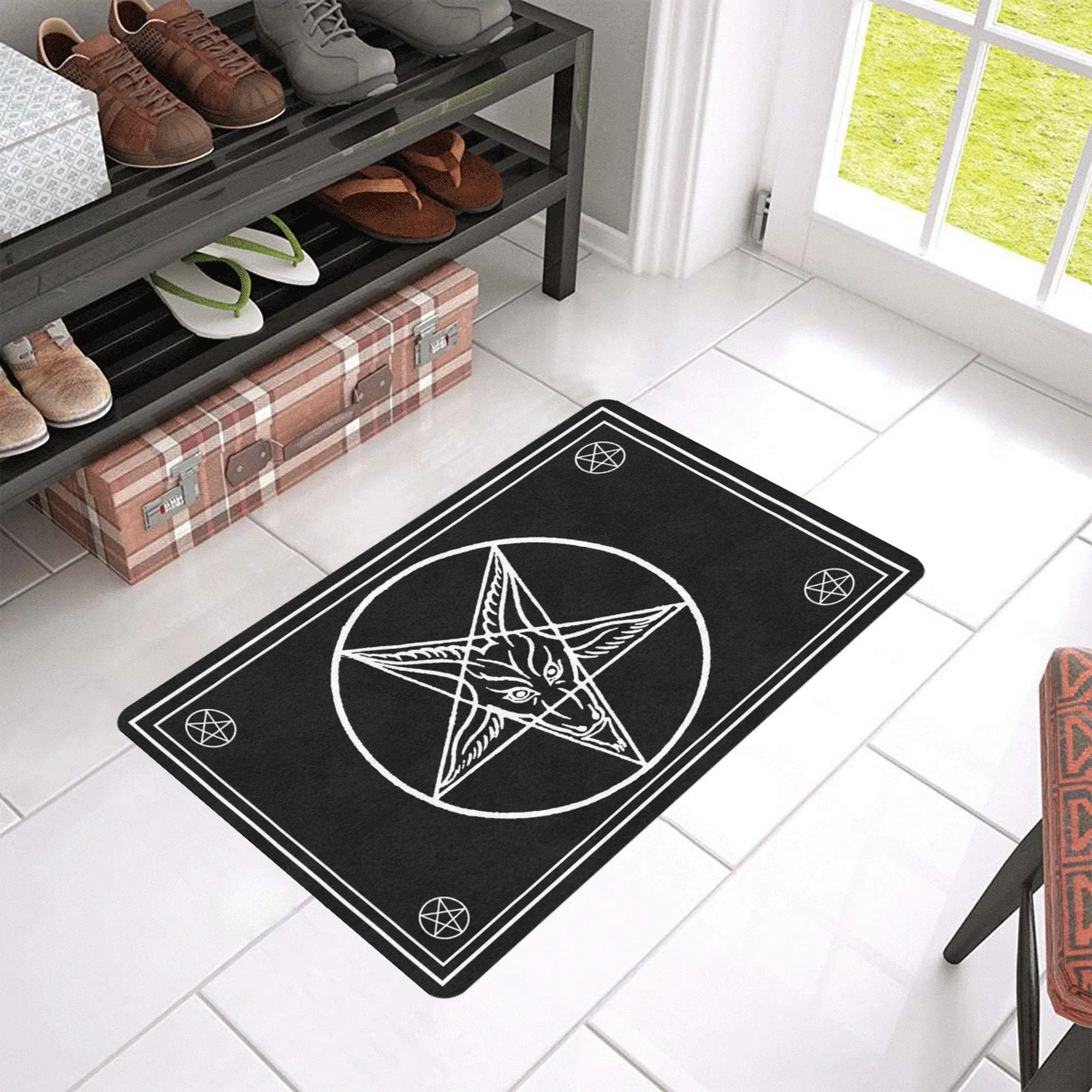
Cabinetry and hardware are fundamental to the design, defining the gothic style in your kitchen. Opt for dark-stained or painted cabinets in shades of black, charcoal gray, or deep forest green, establishing a moody and elegant foundation. The details on the cabinets can further enhance the gothic theme. Think of arched panels, ornate carvings, or subtle, gothic-inspired hardware. Choose cabinet hardware made from materials like wrought iron, antique brass, or bronze, which will add an element of luxury and character. The design and finish of the hardware can dramatically impact the overall look; consider antique or weathered finishes for a sense of history and depth. By choosing the right combination of cabinets and hardware, you can transform your kitchen into a beautiful and striking gothic sanctuary, where every detail reflects the style’s unique aesthetics.
Other Gothic Kitchen Decor Elements
Besides mats, lighting, and cabinetry, several other elements can enhance the gothic theme in your kitchen. Consider incorporating gothic-inspired artwork, such as dark landscapes, portraits, or abstract pieces. Mirrors with ornate, antique-style frames can create the illusion of more space while reflecting the dramatic ambiance. Decorative items, like candelabras, antique clocks, and wrought iron shelves, can add character and personality. Choose textiles in rich, dark colors, such as velvet, brocade, or damask, for curtains, dish towels, or seat cushions. These textiles will add texture and depth to the space, complementing the dark color palette. Integrating these elements creates a fully realized gothic kitchen, where every detail contributes to the overall aesthetic, creating a functional and stylish space.
Maintaining Your Gothic Kitchen
Maintaining a gothic kitchen involves regular cleaning and care to ensure its longevity and beauty. The materials used in gothic design, such as dark woods, metal accents, and decorative fabrics, require specific care. Regular dusting and wiping down surfaces will prevent the buildup of dirt and dust. Use appropriate cleaning agents that are gentle on your materials. For example, avoid harsh chemicals that could damage the finish of your cabinetry or the metal accents. Protect your surfaces from heat and moisture. Always use trivets or coasters under hot items to prevent damage. By establishing a regular cleaning routine, and using the right cleaning supplies, you will protect the intricate details that define your gothic style.
Cleaning and Care Tips
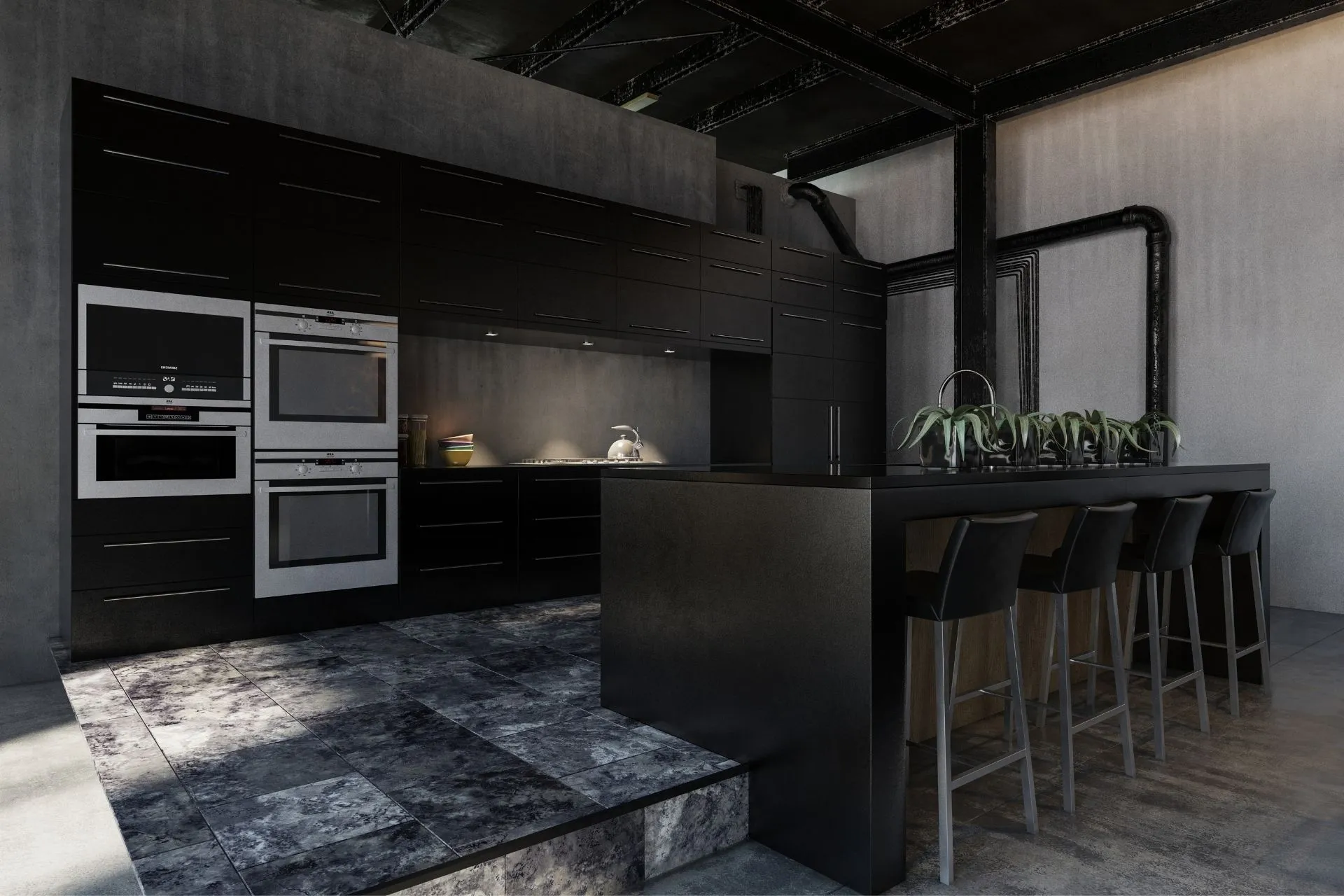
Cleaning and care are crucial for keeping your gothic kitchen in excellent condition. Use a gentle approach to clean surfaces, avoiding abrasive cleaners that might damage finishes. Regularly dust all surfaces, including cabinetry, artwork, and lighting fixtures, to remove dust buildup. Wipe down spills immediately to prevent stains and damage to your counters and flooring. For wooden surfaces, use appropriate wood cleaner and polish. Clean metal accents with specialized metal cleaners to maintain their shine and prevent tarnishing. Regularly wash textiles such as curtains or dish towels according to their care instructions. By following these tips, you’ll ensure that your gothic kitchen remains a beautiful and inviting space.
Preserving the Gothic Style
Preserving the gothic style in your kitchen is essential for ensuring the longevity of its unique character. Regularly assess the condition of your decor and make necessary repairs. Protecting your kitchen from extreme temperatures and humidity can prevent damage to wooden elements and metal accents. When renovating or updating the space, stay true to the core gothic aesthetic. Look for new accessories and decor pieces that complement the existing elements. By making sure your gothic kitchen remains a testament to your unique style, you will maintain a space that is both beautiful and enduring. The gothic style embodies a sense of timeless beauty, so make every effort to preserve the unique character of your gothic kitchen.
